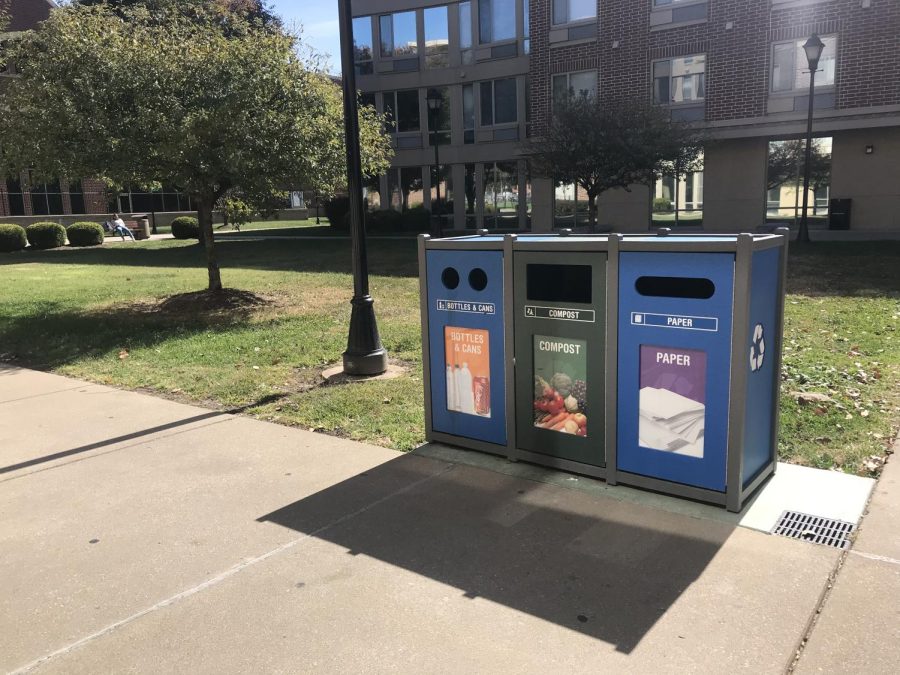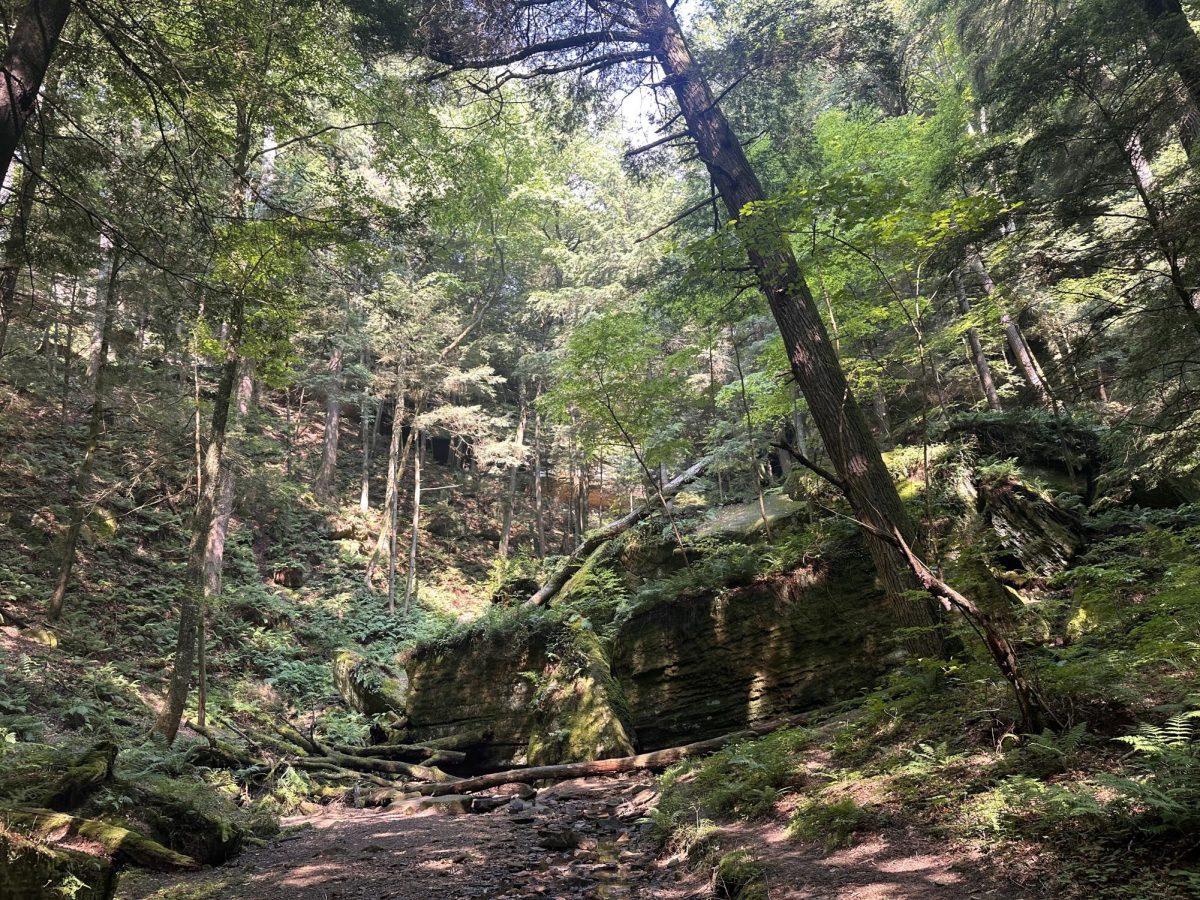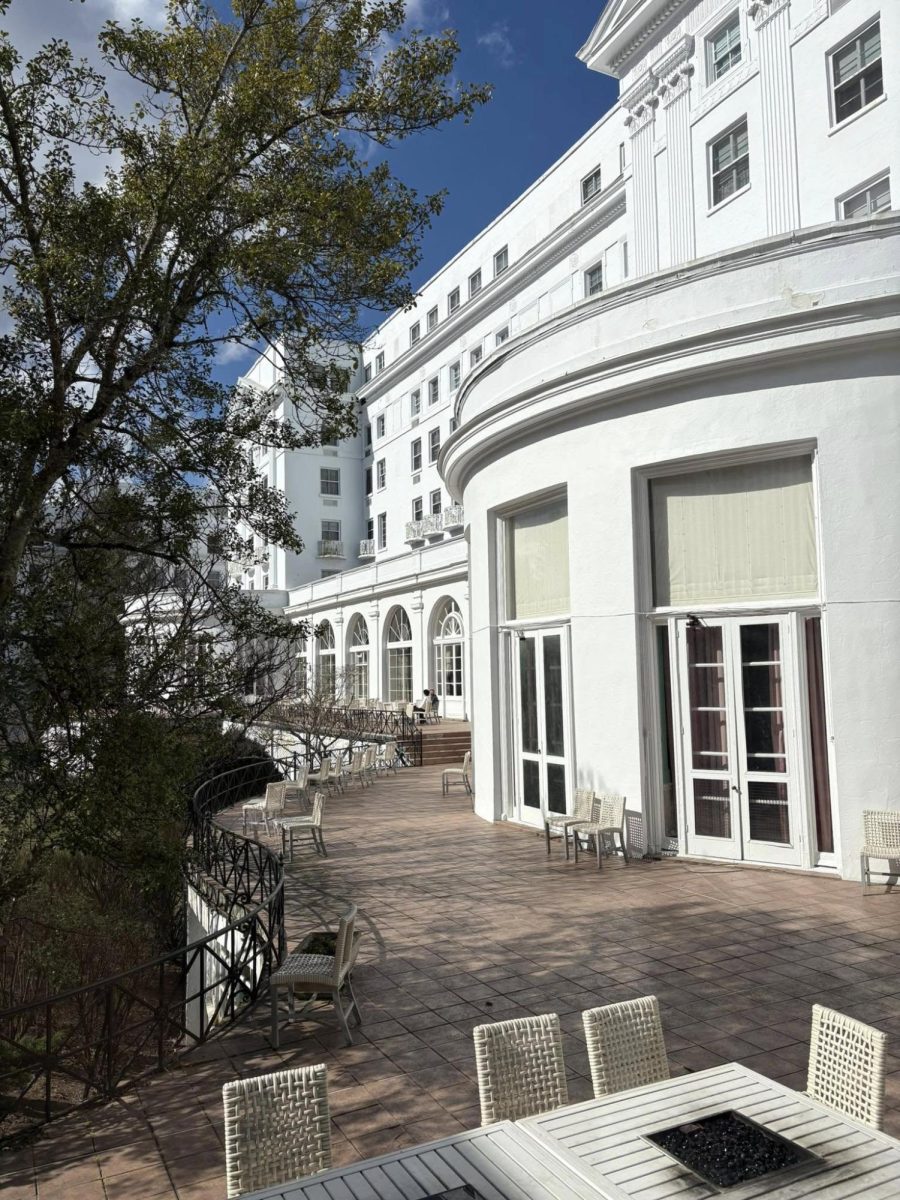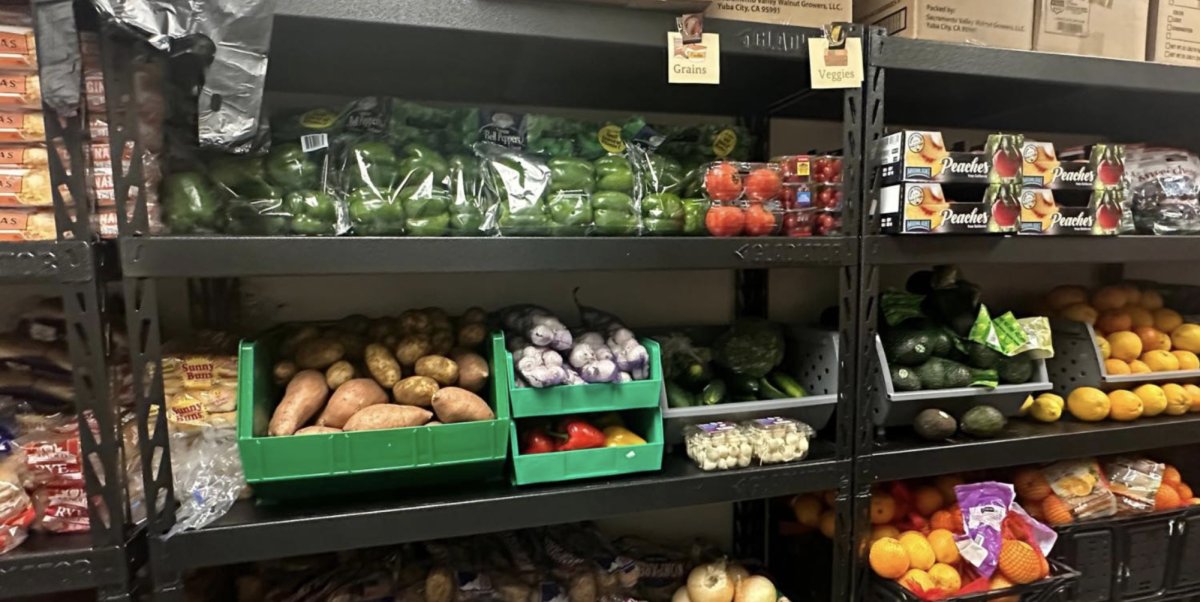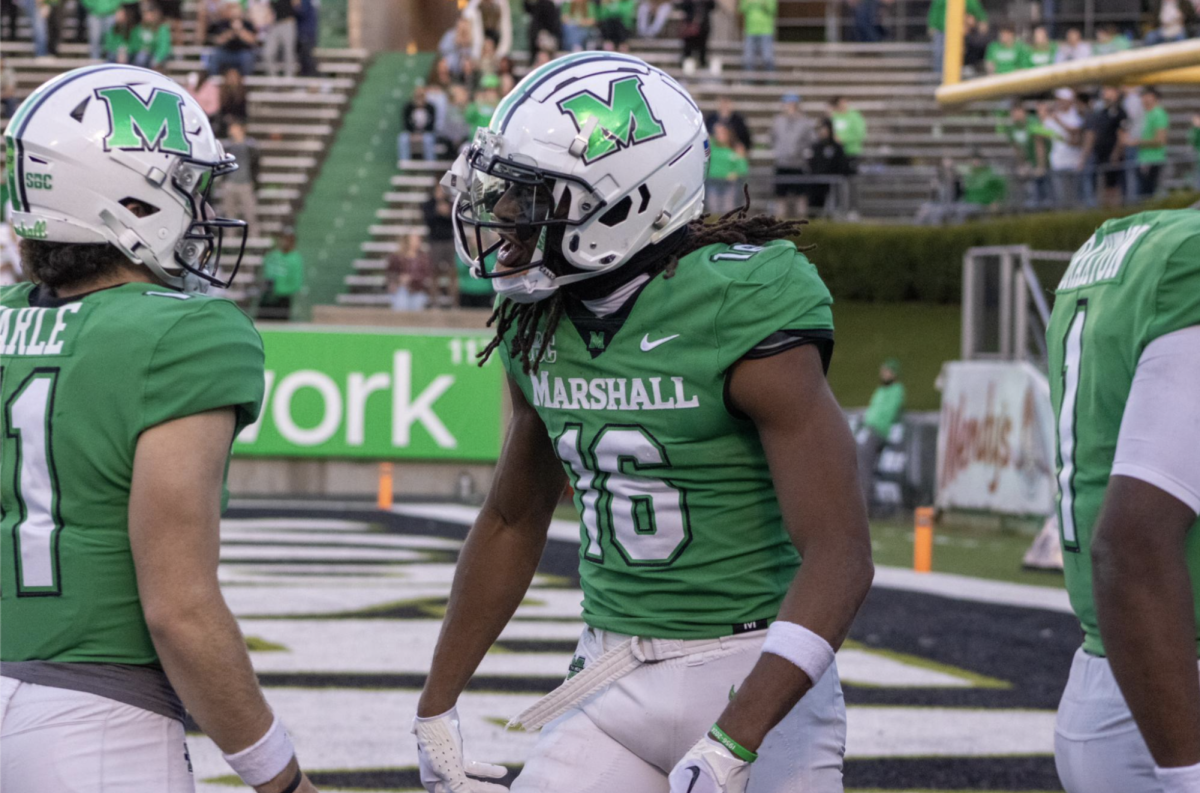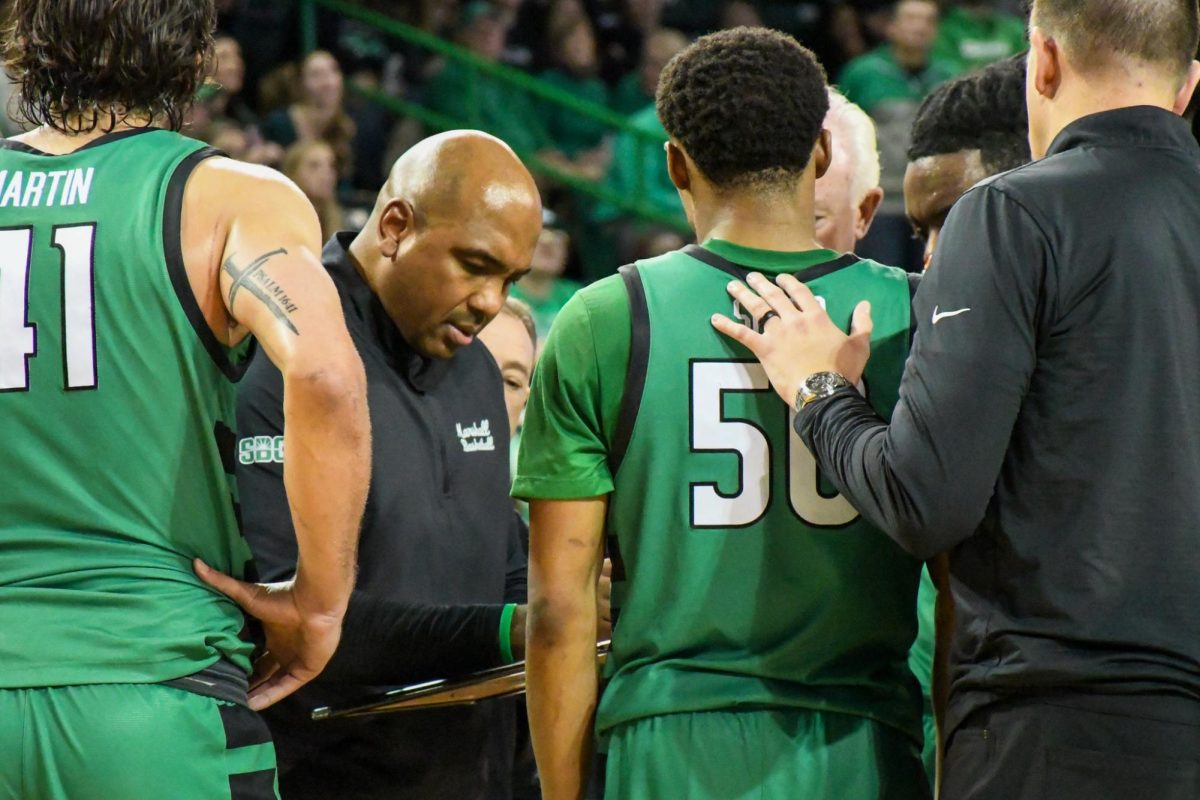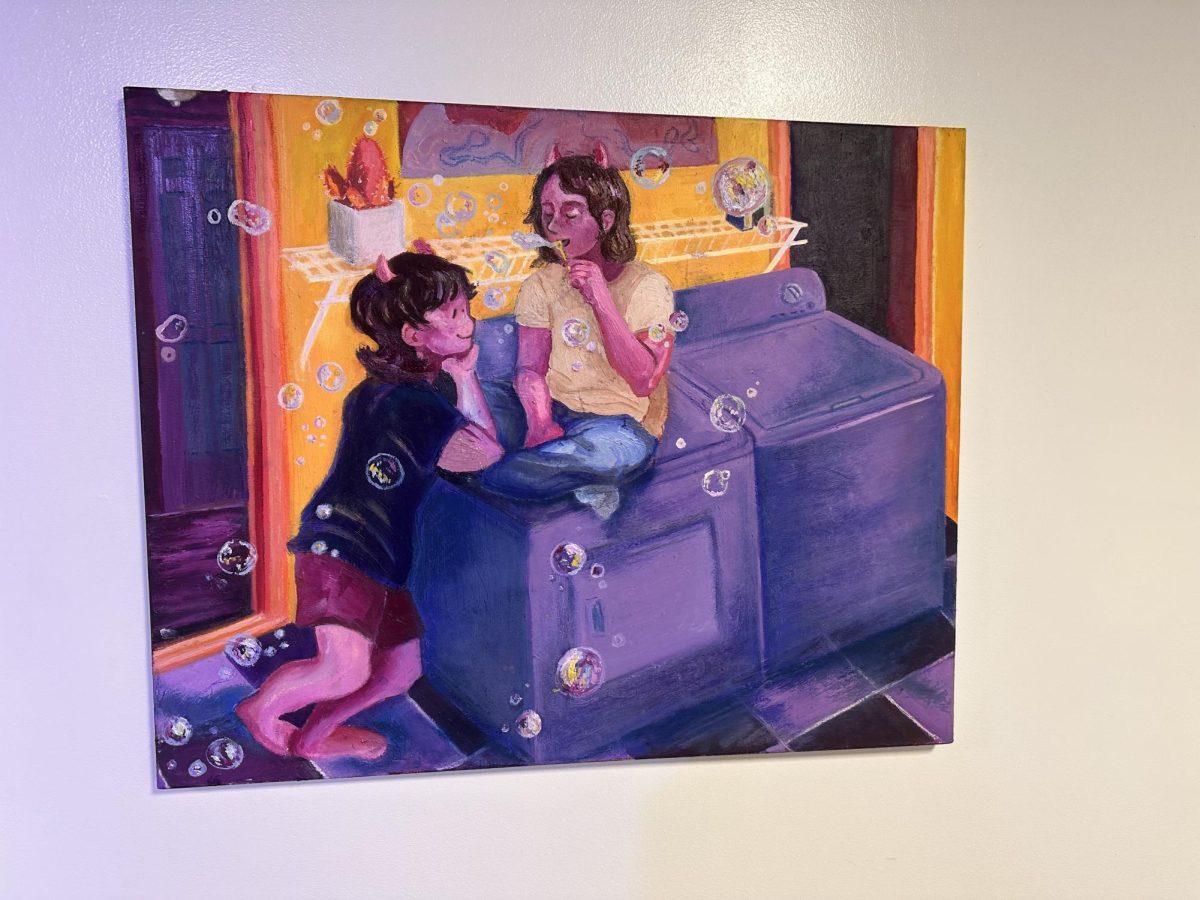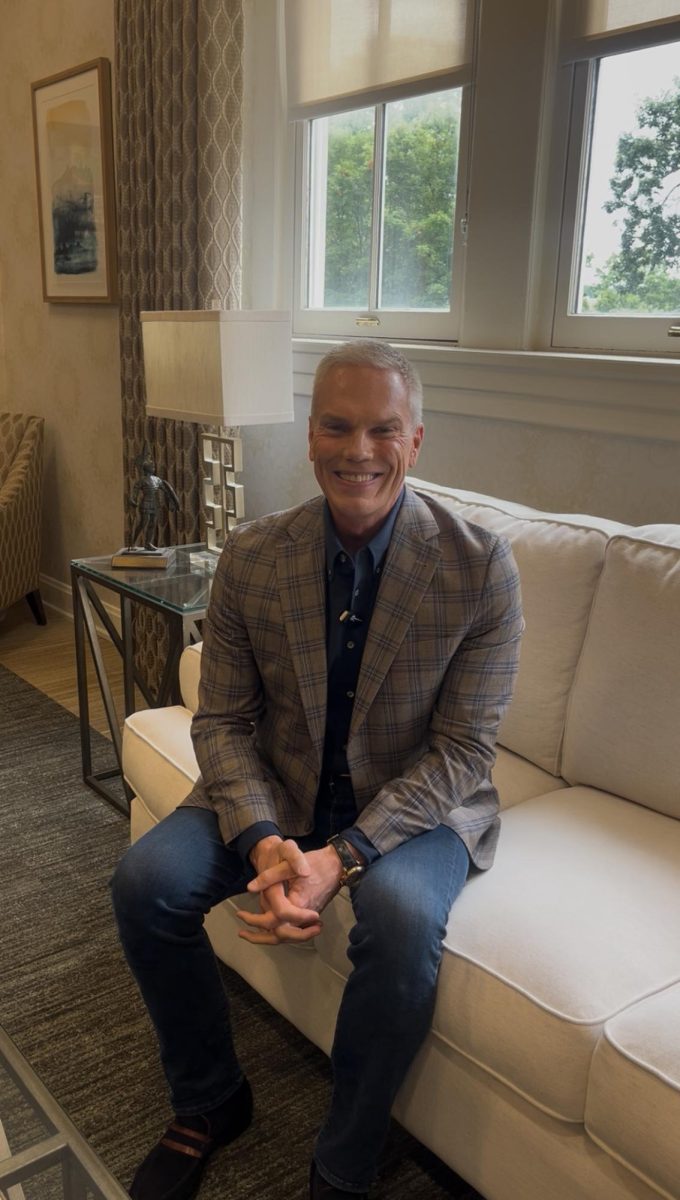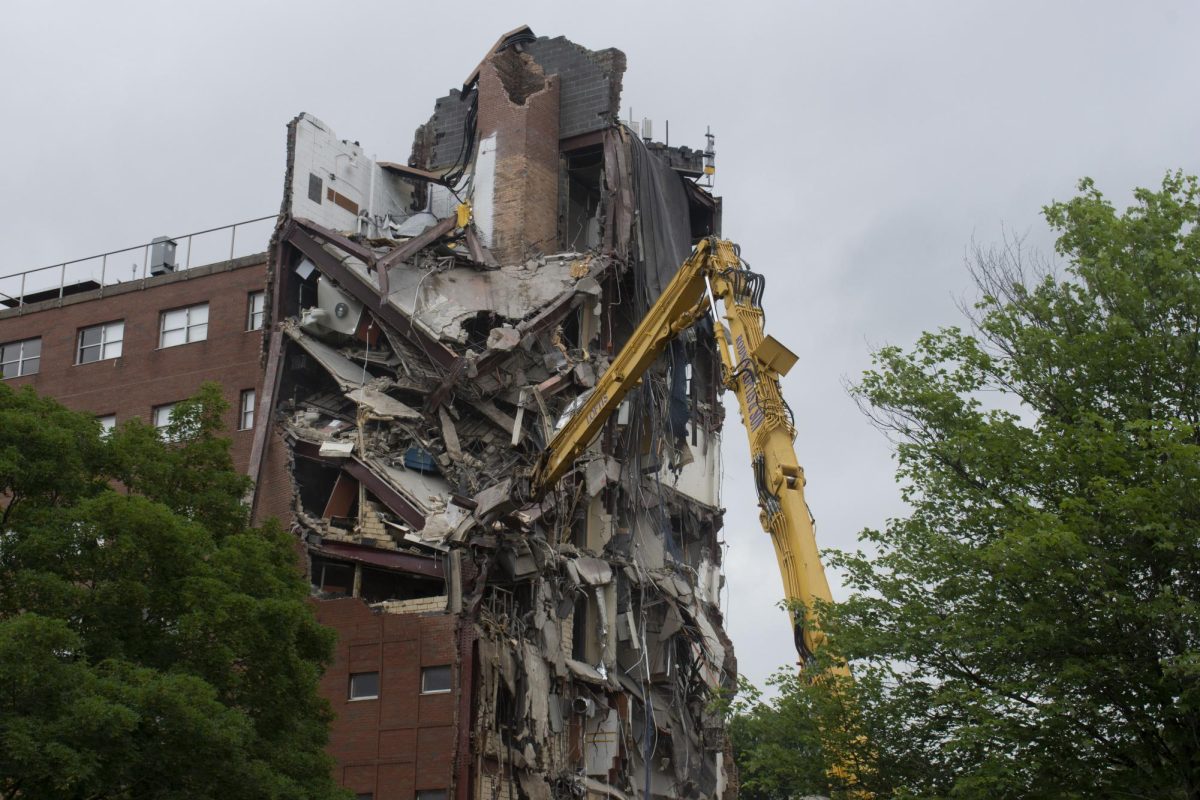Where Does Marshall’s Recycling Go?
October 11, 2022
As new bins appear across campus to encourage students to recycle, Marshall’s Sustainability Department continues to take steps to educate students on the recycling process.
“Recycling is a big word,” Amy Parsons-White, director of the Sustainability Department, said. “It encompasses a lot of things.”
To convert waste into reusable material, Marshall has adopted various methods. It begins with the recycling of aluminum, plastic, cardboard and paper collected from the bins around campus.
Currently, the custodial staff at Marshall collects the recycling from the bins and delivers it to the nearest storage location. These locations are situated in each of the academic and residence halls throughout the campus.
“We currently don’t have the manpower to hit every recycling bin every day,” Parsons-White said. “Our guys will just go to that central location, pick it up and put it in the compactor.”
The compactor, located between Harris Hall and the Science Building, compresses the recyclable materials into manageable sizes through the removal of air, creating a more hygienic workspace for collectors.
Rumpke Waste and Recycling handles the collection process, then picks up the compactor monthly and empties it at their recycling center in Ironton, Ohio. The recycling center then sifts through all the waste and determines what can be reused and recycled.
Another method that Marshall’s Sustainability Department has adopted is composting, which is the process of recycling perishable organic waste from food, lawns, white paper and cardboard.
“We should be up and running in the next month,” Parsons-White said. “We have electricity, we just hired a new compost coordinator and we have our worms working.”
The compost that comes from recycling can be sold as fertilizer, reused by the student garden and reused by the greenhouse on campus.
“Compost is a valuable product,” Parsons-White said. “We will be saving money on waste haul on one side and making money on compost sales on the other. It’s the perfect sustainable model.”
The facility will be the second largest university composting facility in the eastern United States and can compost up to eight tons in a day.
Marshall also recycles textiles and household recycling through the university thrift store, which opened the fall semester of 2021, and the Green Move-Out campaign, which allows students to donate belongings they no longer need when moving from the dorms. This gives students the opportunity to pick up clothing, furniture and electronics they need at a lower cost.
The recycling programs are the first steps the department wants to make in creating a sustainable campus and community. The Sustainability Department is continuing to work on numerous other methods to ensure a greener campus and community through actions such as: phasing out single-use plastics, creating a mentor-based program for students to volunteer and educate other students on sustainable living and sponsoring events to make them sustainable with the next one being Huntington Pride on Oct. 22.
For more information, or for those interested in volunteering for future events or mentorships, contact the Sustainability Department via email at [email protected]


